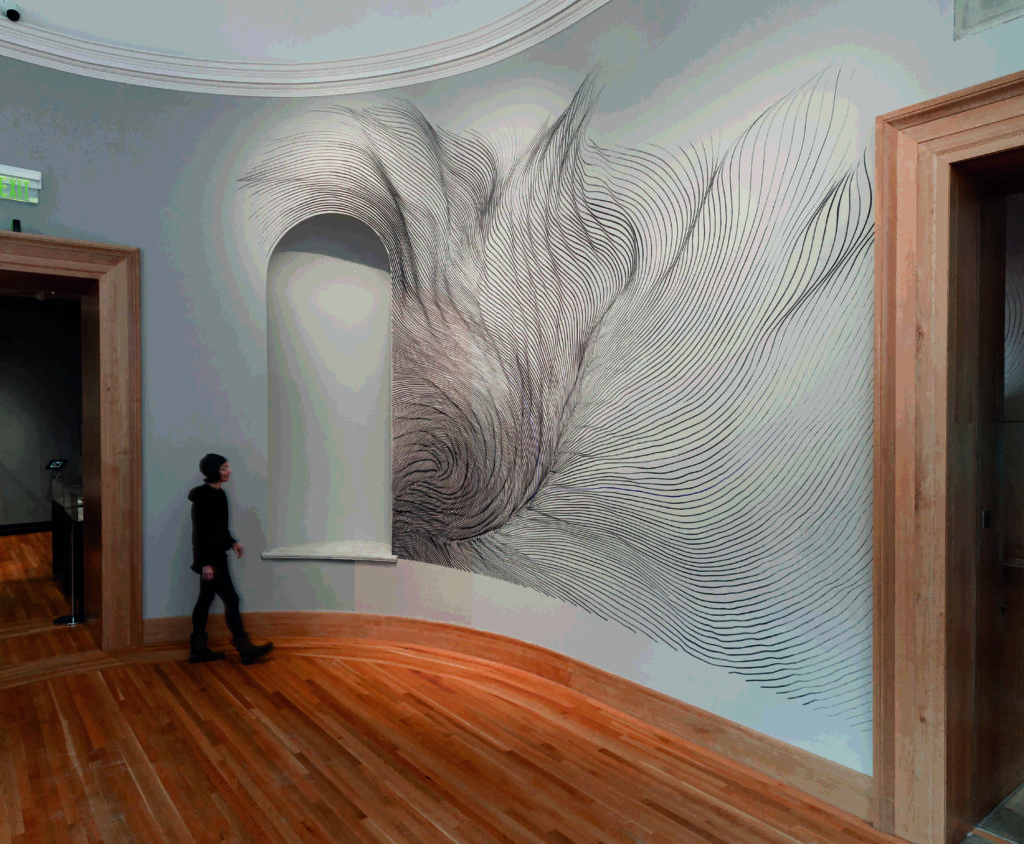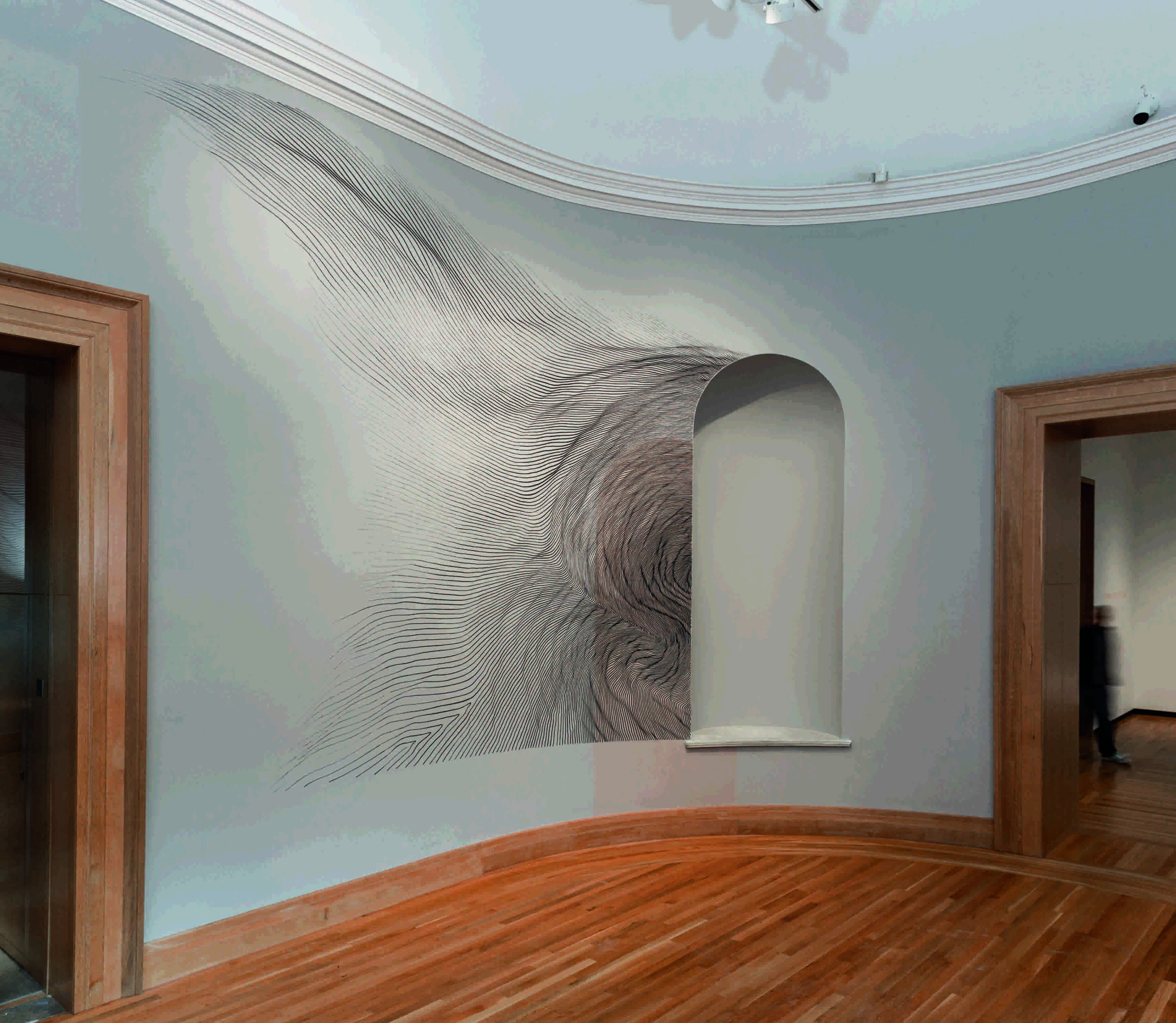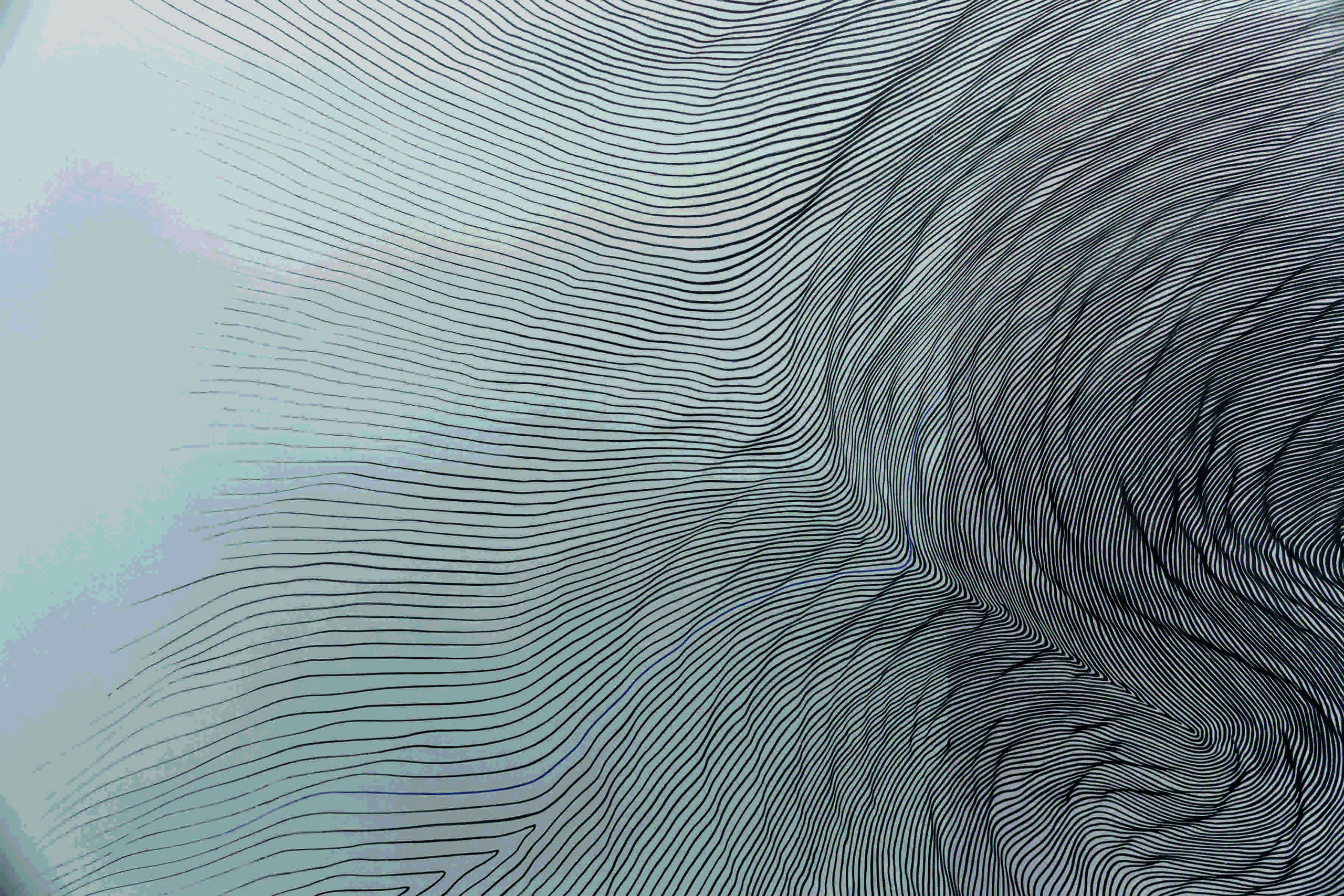
Washington, D.C.-based artist linn meyers has created renowned site-specific installations for museums like the Hirshhorn, The Phillips Collection, and the American University Katzen Arts Center. Using nothing but ink and a brush, meyers paints directly onto the wall and lets the architecture of each space influence her final composition. Her most recent exhibitions for the Bowdoin College Museum of Art—titled “Let’s Get Lost” and “Listening Glass”—were born out of a partnership with sound artists Rebecca Bray and James Bigbee Garver, and software designer Josh Knowles. In the exhibition, visitors are asked to read meyers’s painting using a smartphone app, which then plays a musical composition based on the form of her painting. Here, meyers discusses her practice and how the exhibition was created with students in mind and why it responds to 21st-century technology.
“I only use wall paint and acrylic ink for the wall drawings. The architecture of the space is also one of the materials. It’s my substrate and the primary element that drives the composition. But I never bring additional materials. In 2007, I made my first wall drawing in my studio. It was in response to two things that I was grappling with. One was my need to explore how the imagery that I make relates to the edges of the substrate (and that’s a question I still come back to over and over again). And the other was the question of ownership and all the complexities of making objects. It took me a month to complete the drawing in my studio, and I was satisfied with the process. Soon, opportunities arose to make wall drawings in various institutions. As I began to do that, for the first few exhibitions, I reserved the right to paint over the wall drawing before the show opened. I would bring other work with me knowing that if the wall drawing didn’t come together, I could install the straight object. But over time, as I’ve become more comfortable with making the wall drawings, I no longer do that.
The exhibition at the Bowdoin College Museum of Art is in two parts. ‘Let’s Get Lost’ is a wall-drawing, and that piece is complete. The second part of the exhibition is called ‘Looking Glass,’ and it was collaborative. It also affected how I thought of ‘Let’s Get Lost.’ The second exhibition uses technology that is dependent upon certain visual qualities within the drawing. I had to take that into account as I created ‘Let’s Get Lost.’ It’s a little bit of a snake eating its tail, because ‘Let’s Get Lost’ is a thing unto itself; it was partly driven by the architecture of the space, but it was also driven by the needs of the technology of ‘Listening Glass.’ Rebecca Bray, James Garver, and I started out knowing that we wanted to add a sound element to my drawings, but none of us knew what that would look like. We always understood that there would be a technology element, and when the concept took the form of an app, we brought in a software designer named Josh Knowles. Basically, ‘Let’s Get Lost’ turns the gallery into an instrument. The walls can be played and turned into a musical composition. There was this tension between wanting to make a wall-drawing that does a lot of the same things that my other wall drawings do but also the need to reign it in so the work would be compatible with the technology. I worked with the team back and forth for years to refine my mark-making so that the app could be developed to function well. Josh told me what size of lines could work, and if they could be close together or far apart. We wanted to add another element to the sound that could be triggered by color. But the color in my work exists throughout, so we thought, ‘What if there’s an Easter egg that exists within the work that could trigger a certain sound?’ I had to figure out a way to incorporate that within my work so that it felt organic to me as an artist, as a part of my practice.
Everyone has a phone in their hand when they walk through a museum, and a lot of museums are trying to harness that. It’s an inevitability, so why fight it? There are hashtags and different tours you can take with your phone. But in this case, we’re asking people to use their phone not to prove that they were there but to become a part of the work. This project is perfect for Bowdoin is because it’s a college campus. The students there are learning about technology, visual art, and the intersections between art and science. We know how excited people are at that time in their lives to encounter new ideas. We also had a group of students who helped us with user testing. During one session, I was worried about how students would react to spending so much time with the piece. They were asked to stand there and play with the app while looking at the work for 10 to 15 minutes. But one person actually said, ‘I can’t believe the time passed so quickly. I really felt lost in the work.’”




